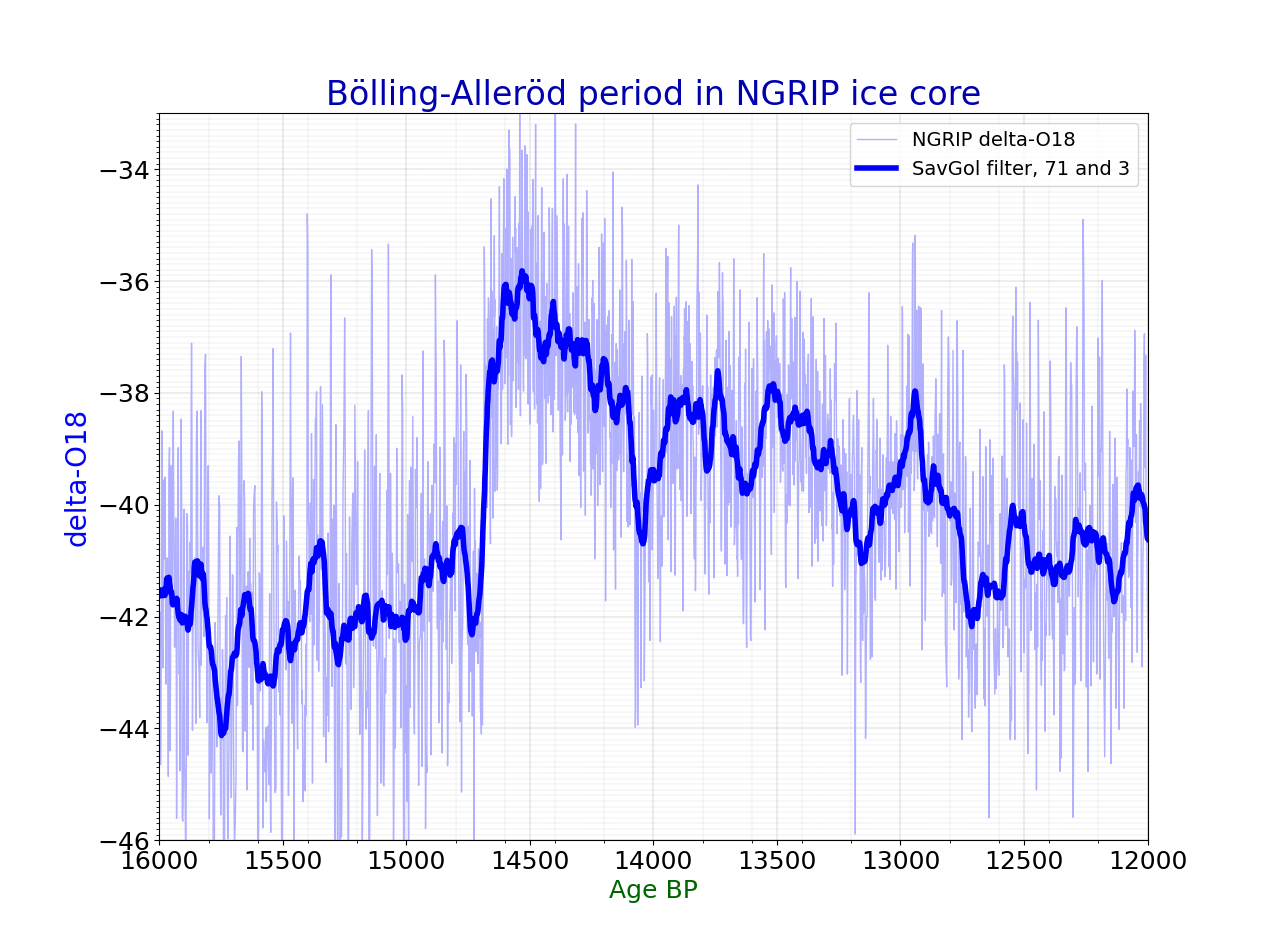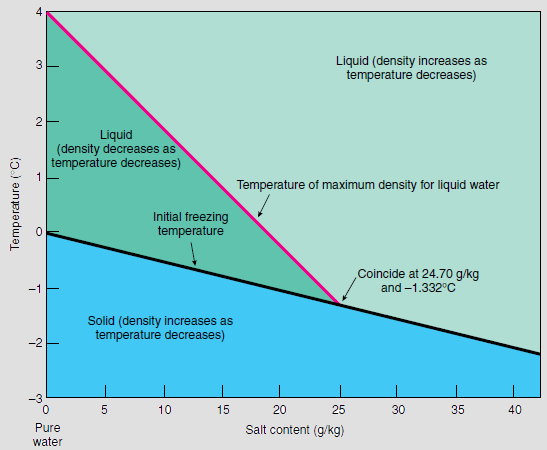|
Bølling–Allerød Interstadial
The Bølling–Allerød Interstadial (), also called the Late Glacial Interstadial (LGI), was an interstadial period which occurred from 14,690 to years Before Present, during the final stages of the Last Glacial Period. It was defined by abrupt warming in the Northern Hemisphere, and a corresponding cooling in the Southern Hemisphere, as well as a period of major ice sheet collapse and corresponding sea level rise known as Meltwater pulse 1A. This period was named after two sites in Denmark where paleoclimate evidence for it was first found, in the form of vegetation fossils that could have only survived during a comparatively warm period in Northern Europe. It is also referred to as Interstadial 1 or Dansgaard–Oeschger event 1. This interstadial followed the Oldest Dryas period, which lasted from ~18,000 to 14,700 BP. While Oldest Dryas was still significantly colder than the current epoch, the Holocene, globally it was a period of warming from the very cold Last Glacial Maxi ... [...More Info...] [...Related Items...] OR: [Wikipedia] [Google] [Baidu] |
Thermohaline Circulation
Thermohaline circulation (THC) is a part of the large-scale Ocean current, ocean circulation driven by global density gradients formed by surface heat and freshwater fluxes. The name ''thermohaline'' is derived from ''wikt:thermo-, thermo-'', referring to temperature, and ', referring to salinity, salt content—factors which together determine the Water (molecule)#Density of saltwater and ice, density of sea water. Wind-driven surface currents (such as the Gulf Stream) travel Polar regions of Earth, polewards from the equatorial Atlantic Ocean, cooling and sinking en-route to higher latitudes - eventually becoming part of the North Atlantic Deep Water - before flowing into the ocean basins. While the bulk of thermohaline water upwelling, upwells in the Southern Ocean, the oldest waters (with a transit time of approximately 1000 years) upwell in the North Pacific; extensive mixing takes place between the ocean basins, reducing the difference in their densities, forming the Worl ... [...More Info...] [...Related Items...] OR: [Wikipedia] [Google] [Baidu] |

